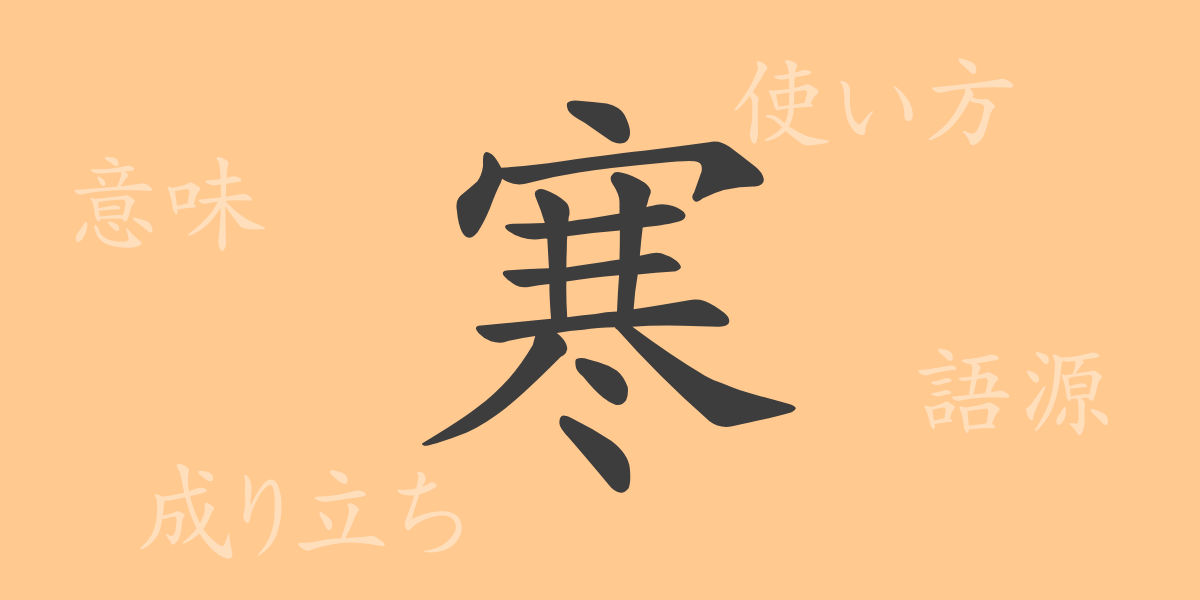The character for “cold” “寒” (Kan) felt at the change of seasons is not merely a word that describes the weather. It is one of the kanji deeply rooted in the lives and emotions of the Japanese people. In this article, we delve into the charm of the commonly used kanji “cold” “寒” (Kan), exploring its origins, meanings, usage, and the significance it holds in Japanese culture.
The Origin (Etymology) of Cold “寒” (Kan)
The kanji for “cold” “寒” (Kan) originated from ancient China, symbolizing a climate so chilly that ice forms. Initially, it combined the character for ice “冫” にすい (nisui)and the character for a mountain cliff “山” to depict the formation of ice on mountains. Over time, the meaning expanded to encompass the sensation of coldness, and it came to be used to describe cold weather and seasons.
The Meaning and Usage of Cold “寒” (Kan)
The kanji “cold” “寒” (Kan) is often used to describe a state of low temperature. It is also used in expressions like “cold winter” to denote a season, and metaphorically, it can describe a relationship that has become very distant or cold, as in “human relationships are cold.” Additionally, it is commonly used to express the physical sensation of being cold with phrases like “my body feels cold.”
How to Read Cold “寒” (Kan), Stroke Count, and Radical
The kanji “cold” “寒” (Kan) has several characteristics:
- Reading: The onyomi (Sino-Japanese reading) is “かん” (kan), and the kunyomi (native Japanese reading) is “さむい” (samu-i).
- Stroke Count: A total of 12 strokes.
- Radical: 宀 うかんむり (ukanmuri).
Idioms, Phrases, and Proverbs Using Cold “寒” (Kan) and Their Meanings
There are various idioms, phrases, and proverbs that include the kanji “cold” “寒” (Kan), such as:
- Winter Swimming寒中水泳 (kan-chū suiei): Swimming during the cold winter period, often practiced for health enhancement and mental discipline.
- Cold Wind (寒風 (kanpū)): A cold and strong wind, particularly referring to the chilly winds of winter.
- Agar寒天 (kanten): A gelatinous substance made from seaweed, used for solidifying dishes in cooking.
- Winter Camellia 寒椿 (kantsubaki): A camellia that blooms in winter, also used to express admiration for its beauty.
- Temperature Difference寒暖差(kandansa): The difference between cold and warm temperatures, a term that calls for attention to health management, especially in spring and autumn.
Conclusion on Cold “寒” (Kan)
The kanji “cold” “寒” (Kan) not only represents cold seasons or temperatures but is also used in a variety of expressions within Japanese culture and language. From everyday terms like “winter greetings” 寒中見舞い (kanchū mima-i)to “cold wave”寒波(kanpa), there are numerous words related to coldness that are intricately linked to the lives and senses of the Japanese people. Through this article, we hope you have gained some insight into the seemingly simple yet profound world of “cold” “寒” (Kan).

























